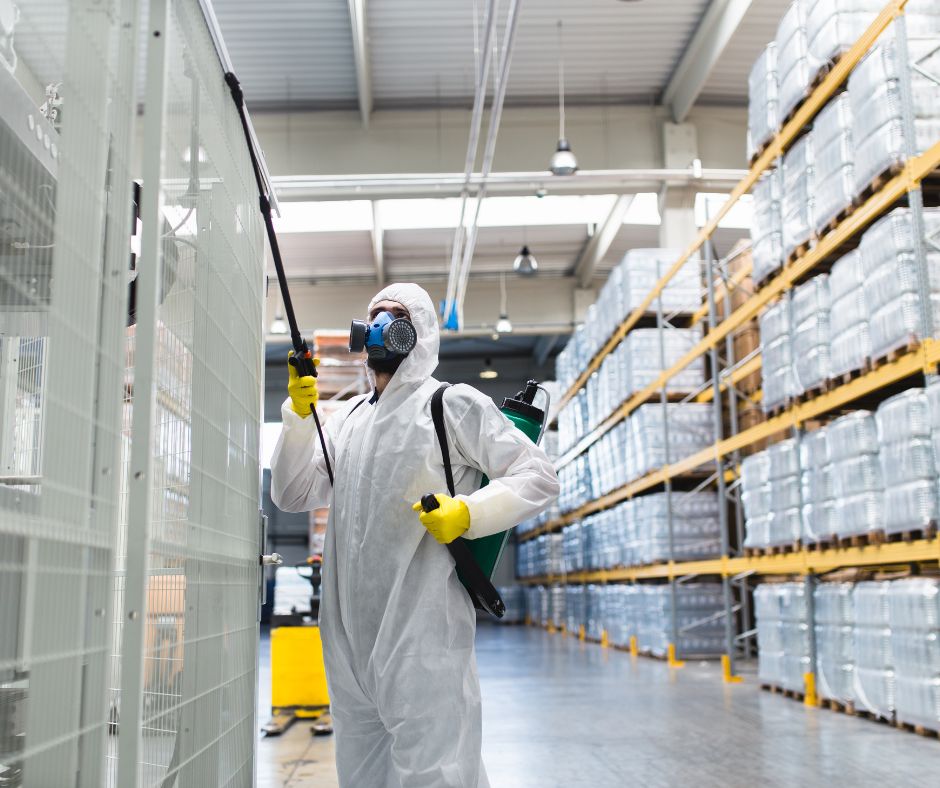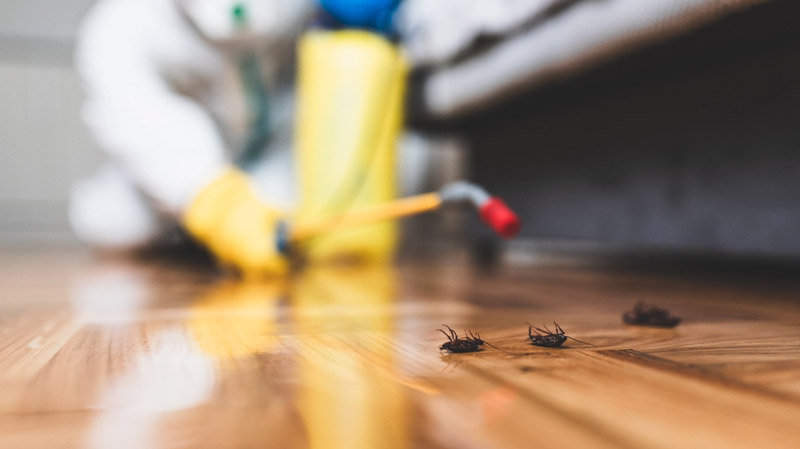Comprehensive Overview to Recognizing Pest Control Methods and Their Treatment
Recognizing bug control techniques is essential for reliable monitoring of undesirable organisms that position risks to health, agriculture, and residential property. This detailed guide will certainly explore numerous strategies, including chemical remedies, organic methods, and mechanical techniques, all under the umbrella of Integrated Bug Management (IPM) As we examine these approaches, it ends up being increasingly clear that the choice of technique can significantly impact both human passions and eco-friendly equilibrium. What elements should be taken into consideration when picking the suitable parasite control technique for a details scenario? The response may lead to more lasting practices than one could initially presume.
Summary of Pest Control Techniques
Parasite control approaches include a selection of methods created to take care of and eliminate undesirable organisms that can damage human health and wellness, farming, and home. Efficient insect monitoring is essential for preserving the stability of ecosystems and making sure the safety and security of food materials. These approaches can be broadly classified into three primary approaches: social, mechanical, and organic controls.

Cultural control entails modifying farming methods or environmental problems to minimize parasite facility and reproduction. This strategy consists of plant turning, cleanliness, and selecting pest-resistant plant ranges. Mechanical control counts on physical barriers or tools to avoid pest gain access to or straight remove them. Examples consist of catches, nets, and hand-picking damaging pests.
Biological control utilizes all-natural killers, parasites, or virus to control pest populaces. This approach emphasizes environmental balance and can consist of presenting beneficial insects, such as ladybugs or predatory nematodes, to take care of insect visibility.
Integrated insect management (IPM) integrates these methods, utilizing an alternative approach that emphasizes prevention, surveillance, and accountable management. By using a mix of these techniques, pest control can be more lasting and reliable, reducing reliance on chemical interventions while protecting human wellness and the atmosphere.

Chemical Bug Control Solutions
A variety of chemical bug control remedies are offered, providing efficient alternatives for handling parasite populaces when other techniques might drop short. These remedies mainly include pesticides, herbicides, fungicides, and rodenticides, each developed to target details bugs while decreasing harm to non-target organisms.
Pesticides are particularly efficient versus a variety of insects, consisting of ants, roaches, and termites, and can be categorized as contact or systemic representatives. Call insecticides kill parasites on get in touch with, while systemic insecticides are taken in by plants, making them harmful to bugs that eat them. Herbicides are utilized to manage undesirable greenery, whereas fungicides are important for managing fungal conditions that can harm crops and decorative plants.
Rodenticides, made for rodent control, are readily available in various formulas, consisting of baits and tracking powders. It is crucial to comply with label instructions meticulously to ensure security and efficiency. Additionally, integrated bug monitoring (IPM) concepts ought to be used, integrating chemical options with cultural, mechanical, and organic approaches for lasting insect control. This holistic method not just enhances pest management effectiveness but likewise minimizes possible environmental influences connected Clicking Here with chemical use.
Organic Parasite Control Techniques
Biological bug control strategies offer an eco-friendly option to chemical approaches by utilizing all-natural killers, bloodsuckers, or pathogens to manage parasite populations. This approach leverages the environmental relationships between organisms, promoting a well balanced environment while reducing chemical deposit in the atmosphere.
One of one of the most usual organic control approaches includes the intro of all-natural opponents. As an example, ladybugs are utilized to regulate aphid populaces, while parasitical wasps can target caterpillars and other parasites. These natural killers efficiently decrease pest numbers without hurting beneficial bugs.
Furthermore, microbial agents such as germs, fungis, and viruses are made use of to contaminate and eliminate certain bugs. Bacillus thuringiensis (Bt), a naturally happening germs, is extensively utilized to regulate caterpillars and various other larvae, showcasing the effectiveness of microbial parasite control.

Physical and Mechanical Methods
Regularly employed in incorporated parasite administration strategies, physical and mechanical techniques work as reliable tools for controlling insect populaces without making use of chemicals. These techniques count on physical obstacles, traps, and other mechanical tools to avoid or get rid of bugs, making them eco-friendly alternatives.
Physical approaches include the use of obstacles such as insect netting, screens, or row covers that literally block parasites from accessing plants. This is especially useful in farming setups where crop security is important. In addition, habitat manipulation, such as removing particles and standing water, can lower bug reproducing sites, consequently lessening infestations.
Mechanical methods include catches, which can be created to catch certain straight from the source parasites. Sticky catches and scent traps are usual instances that lure and retain insects, helping with monitoring and control. Vacuuming is another mechanical strategy, reliable for eliminating parasites from interior atmospheres, particularly in cases of infestations.
Preventative Insect Administration Strategies
Reliable preventative insect administration approaches are necessary for preserving healthy environments and decreasing pest-related concerns prior to they arise (Pest Control in Port Charlotte, FL). These techniques concentrate on aggressive actions that minimize the possibility of parasite navigate here invasions by attending to the root creates

One more important technique entails correct landscaping practices (Pest Control in Port Charlotte, FL). Keeping vegetation trimmed and away from buildings can minimize harborage locations for bugs. Carrying out integrated insect management (IPM) strategies that include keeping an eye on parasite populaces and utilizing biological controls can promote a balanced ecological community that naturally reduces pest numbers.
Education and learning and training for personnel and homeowners on acknowledging very early indicators of pest activity are likewise crucial components of a reliable preventative program. By cultivating an environment of awareness and watchfulness, organizations and homeowners can considerably improve their pest administration efforts and safeguard their spaces versus future infestations.
Final Thought
Utilizing an Integrated Pest Administration (IPM) framework enables for the lasting administration of insects while decreasing environmental influence. Eventually, a thorough understanding of these diverse insect control strategies is important for achieving successful outcomes in insect management initiatives.